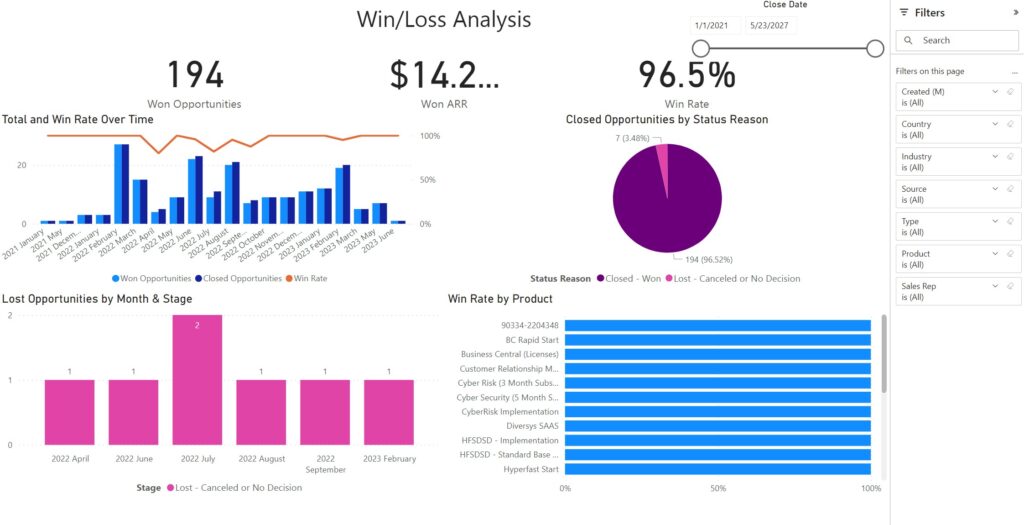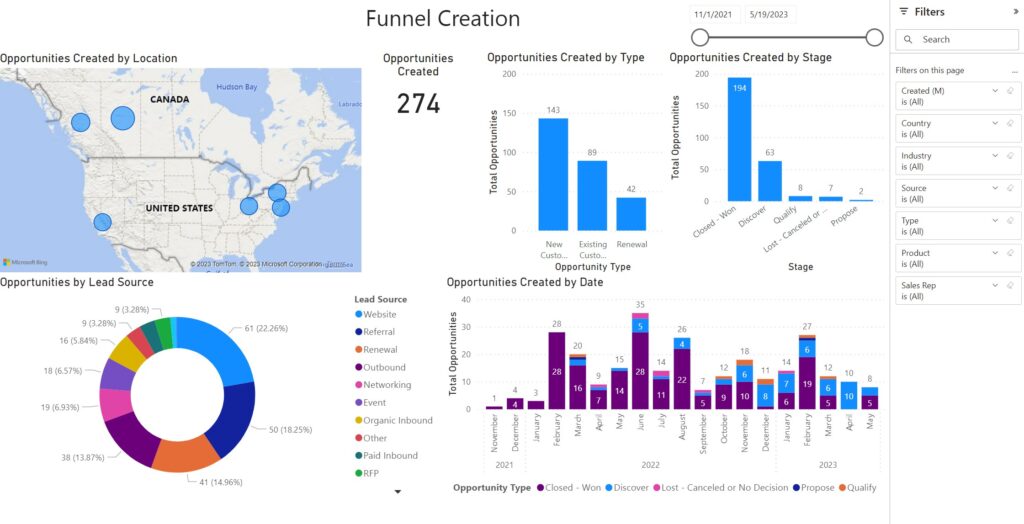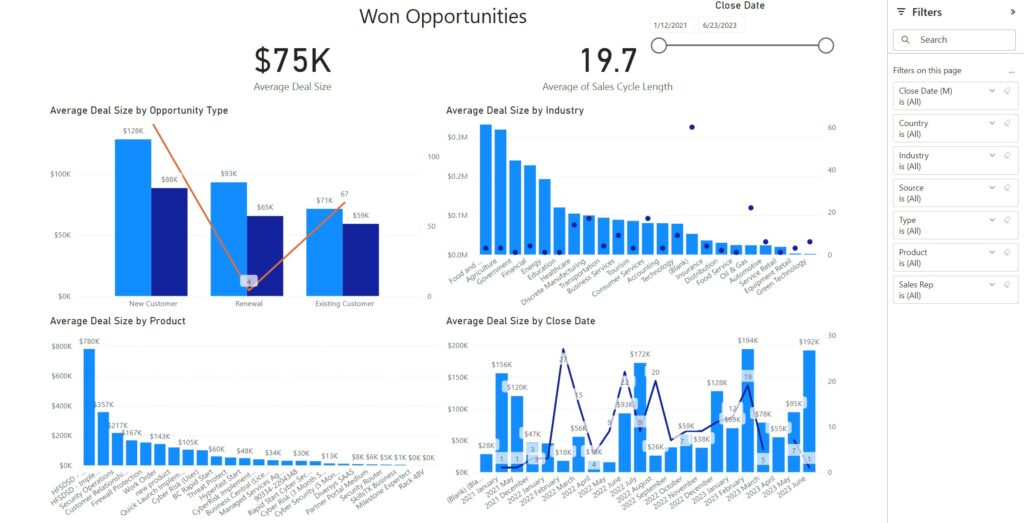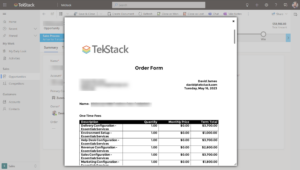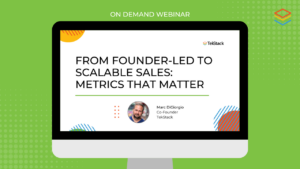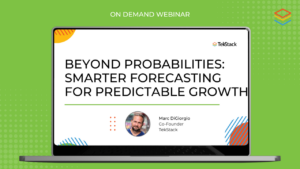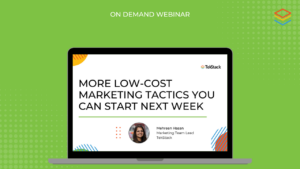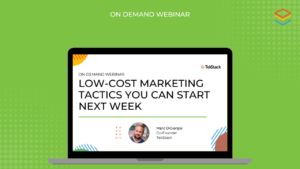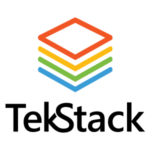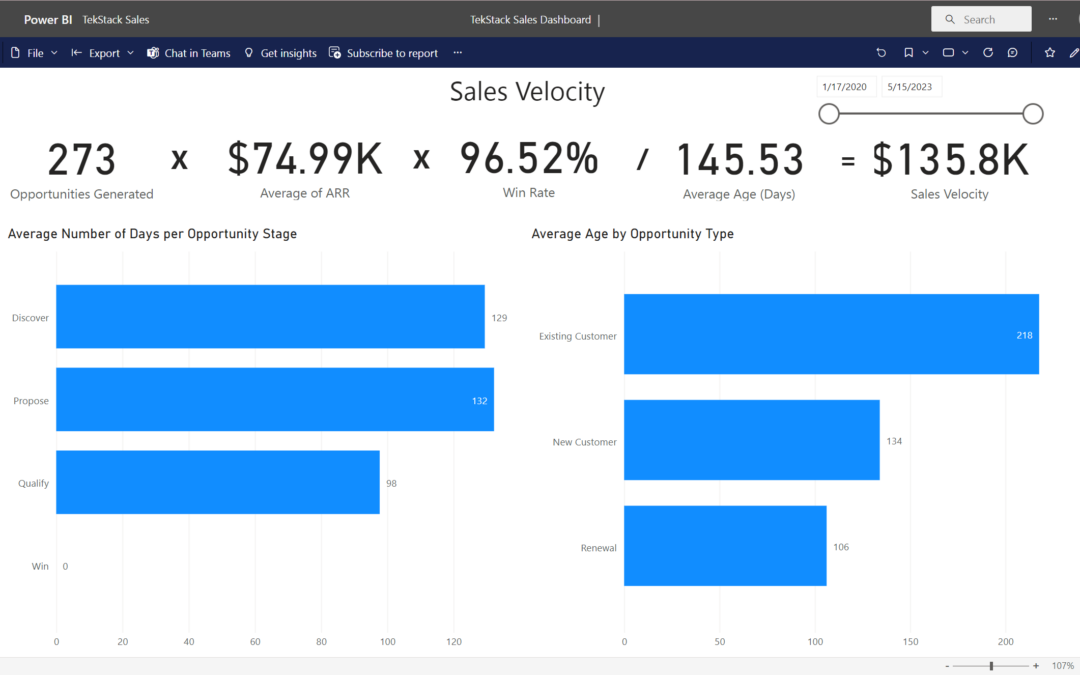
Want to know if you are building funnel fast enough to hit your targets? The answer is a metric called Sales Velocity. It’s a simple formula that tells whether you have the momentum you need to hit your booking number. It’s a bit more forward predicting than other sales metrics which are lagging, however, it is based on lagging data. Watch out though, sometimes the data can lie to you if you are not careful with how it’s collected.
# Opps. Number of Opportunities created in the time period you want to analyze.
Average Deal Value. Aggregate of deal values over number of opportunities.
Win Rate. Total Closed Won / (Total Closed Won + Total Closed Lost).
Average Sales Cycle Length. Measured in days: the number of days on average it takes to close a deal. Aggregate of age over the number of opportunities. Only measure closed deals!
Considerations for B2B SaaS companies using Sales Velocity:
There are a couple of really important considerations. First, you should be separating Opportunities between New Customer, Existing Customer, and Renewal opportunities. This is because the win rates, deal value, and sales cycle length will be unique to each type. Renewals will naturally have a 90% win rate and shorter cycle which could counter the lower win rate on new customers.
Also, the Deal Value should separate Total Amount from Recurring Amount and should not include impact of multi-year deals. Is a $1M deal $1M of recurring? Or $800K of services on a two year subscription of $100K? Those deals are completely different to one another. Our recommendation for companies looking to build ARR is to only measure annual recurring revenue separated from any one-time revenue like services, and impact of multi-year deals.
What does Sales Velocity represent?
Essentially this metric answers the question: how many dollars per day is my sales team booking?
How do you interpret this metric? If your sales target is to book $2M in ARR per year, your Sales Velocity should show at least $5,480. That is $2M divided by 365 days.
What if Sales Velocity is lower than what you need to achieve target?
You can influence your sales velocity in one of four ways, in order of priority. This metric prompts excellent conversation with your sales team, provides an opportunity to focus sales coaching, as well as engage with other teams like marketing and product.
Improve Win Rate: This is the first thing to focus on, and because it’s represented as a percentage (fraction), it has a near exponential impact on Sales Velocity. You can often improve win rate through market focus and sales coaching. The data can be aided with loss interviews to get market feedback. To analyze this number correctly, you should have access to Win Rate data – example of a report from TekStack below. You need to be able to carve win rate data by rep, country, industry, product, source, and opportunity type:
Increase Opportunity Creation: Identify your performing channels, as well as underperforming channels. You want to align your spend and activity to your top performing channels and double down on them. It’s not unreasonable to unlock a 10-20% improvement without spending an additional dollar. Just need to remember there are no sacred cows.
Average Deal Size: For deals that closed, could you have increased pricing by 5 to 10% without impacting win rate? Could you have bundled in more value? An improvement of 10% will make a marked difference in your sales velocity.
Average Sales Cycle Length: This might be the hardest thing to control. If your average deal is, let’s say 120 days, can you really reduce it to 90? Without making changes to your qualification process, it’s important to identify where the sales cycles are stalling. Sometimes it’s hard to get at this number. TekStack tracks stage changes automatically as per below:
Sales Velocity is a metric to be shared with the company
Sales success and failure should be shared across the organization. Sales is a team sport, and Sales Velocity is a great metric to communicate in management meetings and board meetings because it illustrates just how much participation the entire company has on sales success. Examples:
Win Rate: Our win rate is below industry average because of pricing or missing features
Opportunity Creation: Our Magic Number (sales efficiency) is top of class, but our opportunity creation is not high enough because we don’t spend enough money in marketing or we don’t have enough sellers.
Average Deal Size: If we create new optional modules, or additional services, we could add them to our quotes
Sales Cycle Length: We spend 60 days in contracting, this could be reduced if we back down on certain clauses or speed up legal review.
How does TekStack help with Sales Velocity?
It’s not just about creating a Power BI report, TekStack provides the process, functionality, and data structure to ensure you are calculating this number correctly, as well as its underlying metrics like Win Rate, Opportunity Creation, Deal Analysis, and more.
Opportunity Types: Automatically capture Opportunity Type and split between New Customer, Existing Customer, and Renewal. A seller never has to select the type, TekStack derives the information automatically.
Deal Size: Separate Recurring Amounts from One-Time Amount, and the impact of multi-year deals. Most CRM systems have one money field like ‘Est. Revenue’. TekStack has Recurring Amount, One-Time Amount, Services Fees, and Total Amount. It also captures multi-year subscription information.
Tracking Opportunity Creation. TekStack captures opportunity creation by source. This source becomes the last touch source which can be separated from first touch source attribution. TekStack has the reporting needed to analyze source against created funnel, current funnel, and closed funnel.
Tracking Win Rates. Win Rates can be tracked by Opportunity Type, Industry, Rep, Country, Source; any attribute.
Sales Cycle Length. TekStack allows you to identify not only the average sales cycle length but also the amount of time that deals are in each stage. TekStack also includes key velocity metrics on a deal basis so sales managers can get a quick read on deals.
Conclusion
Sales Velocity is a simple metric to tell you if you are on track to hit your targets. However, when you unpack what it’s telling you, it’s easy to realize that the metric can prompt more questions than answers. Which is a good thing. Sales Velocity is a metric that should be shared within the company and at board meetings and helps prompt important conversations within the organization.
Want to learn how TekStack can give you the insights your business needs to slay results? Feel free to send us an email, or to me personally at marc @ tekstack.com


